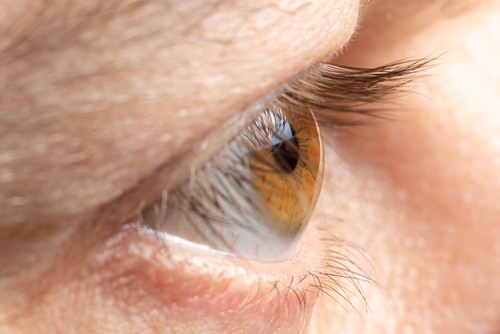
Fuchs’ dystrophy happens when the endothelium, or the thin, innermost layer of your cornea, deteriorates. The endothelium plays a critical role.
It helps you maintain clear vision by removing excess fluid from your cornea. Sometimes, the endothelial cells degenerate due to Fuchs’ dystrophy, causing excess fluid accumulation in your cornea.
A buildup of fluid leads to blurry or distorted vision and other unpleasant symptoms. Keep reading to learn more about Fuchs’ dystrophy, its symptoms, and the available treatment options!
Fuchs’ Corneal Dystrophy
The cornea is the transparent front part of your eye that allows light to enter inside. It comprises five layers: epithelium, Bowman’s layer, stroma, Descemet’s membrane, and endothelium.
In a healthy cornea, the endothelial cells drain excess fluid from the cornea. Fuchs’ affects endothelial cells, causing them to deteriorate gradually and eventually die.
As these cells deteriorate, they don’t work properly, which results in fluid buildup in your cornea. Fuchs’ dystrophy is a slowly progressing condition, the exact cause of which remains unknown.
The condition usually runs in families and affects both eyes. Fuchs’ is also more common in women than men.
Symptoms of Fuchs’ Corneal Dystrophy
You may wake up with blurry vision in the morning, which slowly clears up during the day. Typically, this happens in the early stages of Fuchs’.
While sleeping, water can’t evaporate from the surface of closed eyes.
It builds up in your cornea, causing swelling that blurs your vision.
But once you wake up, water can evaporate. Evaporation reduces the amount of water in your cornea, which brings the swelling down and improves your vision.
As Fuchs’ progresses, evaporation isn’t enough to get rid of the excess water in your cornea. So the swelling and blurred vision last throughout the day.
Other symptoms of Fuchs’ dystrophy include:
- Halos and glare
- Light sensitivity
- Poor night vision
- Sandy, gritty feeling in your eyes
- Sharp pain that may come and go
- Small blisters on your eyes
- Eyes looking cloudy in the mirror
- Reduced vision
The symptoms of Fuchs’ dystrophy often don’t appear until you’re fifty or older.
Fuchs’ Corneal Dystrophy Treatment
Fuchs’ is controlled with medication in the early stages. Your eye doctor may prescribe special eye drops or ointments to remove excess fluid from your cornea and reduce the swelling.
Also, using glasses with photochromic lenses can help if you’re experiencing light sensitivity. As the condition progresses, your vision may deteriorate considerably and affect your ability to perform simple daily activities.
Once Fuchs’ dystrophy gets to this point, your doctor may recommend surgery. Your surgical treatment options may include the following:
Descemet Membrane Endothelial Keratoplasty (DMEK)
During the outpatient procedure, the surgeon only replaces parts of the cornea affected by Fuchs’ with healthy endothelium and Descemet’s membrane from a donor.
Descemet Stripping Endothelial Keratoplasty (DSEK)
If you’ve previously had eye surgery or you have another eye condition, DMEK might not be right for you. Your doctor may suggest a partial-thickness cornea transplant, a procedure called DSEK.
In DSEK, the surgeon peels off damaged endothelial cells and Descemet’s membrane with special strippers. A partial thickness graft is then used as a replacement.
Trusted, Experienced Corneal Specialists
It’s vital to see the skilled, experienced doctors at Colorado Eye Consultants right away if you have any symptoms of Fuchs’. When caught early, Fuchs’ corneal dystrophy can be effectively treated and your vision preserved.
Do you have symptoms of Fuchs’ dystrophy? Schedule an appointment at Colorado Eye Consultants in Littleton, CO, today.

